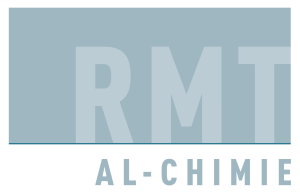MYCOTOXINES
Résumé de section
-
- Publications scientifiques
Richard-Forget F, Oswald I., 2012. Mycotoxines : quelles avancées scientifiques pour une meilleure maîtrise des risques ? Innovations Agronomiques 24, 17-33
Boutigny Al., Barreau C., Atanasova‐Penichon V., Verdal-Bonnin Mn., Pinson-Gadais, L., Richard-Forget F., 2009. Ferulic acid, an efficient inhibitor of type B trichothecene biosynthesis and tri gene expression in Fusarium liquid cultures, Mycological Research, 113: 746‐753.
Boutigny Al., Barreau C., Atanasova-Penichon V., Verdal-Bonnin Mn., Pinson-Gadais L., Richard-Forget F., 2010. Natural phenolic acids from wheat bran inhibit Fusarium culmorum trichothecene biosynthesis in vitro by repressing Tri gene expression. European Journal of Plant Pathology, DOI 10.1007.
Dalie Dkd., Deschamps Am., Richard-Forget F., 2009. Lactic acid bacteria – Potential of control of mould growth and mycotoxins: A review. Food control, 4: 370‐380.
Gourdain, E., Piraux, F., Barrier-Guillot, B., 2011. A model combining agronomic and weather factors to predict occurrence of deoxynivalenol in durum wheat kernels. World Mycotoxin Journal, May 2011; 4 (2):129-139.
Kammoun L., Gargouri S., Barreau C., Richard-Forget F., Hajlaoui M., 2010. Trichothecene chemotypes of Fusarium culmorum infected wheat in Tunisia. International Journal of Food Microbiology, DOI 10.1016.
Merhej J., Boutigny Al., Pinson-Gadais L., Richard-Forget F., Barreau C., 2010. Acidic pH during in vitro culture is determinant for TRI genes expression and trichothecenes B biosynthesis in Fusarium graminearum. Food additives contaminants, 16: 1‐8.
Orlando B., Barrier-Guillot B., Gourdain E., Maumené C., 2010. Identification of agronomic factors that influence the levels of T-2 and HT-2 toxins in barley grown in France – World Mycotoxin Journal, May 2010; 3 (2): 169-174.
Picot A., Barreau C., Pinson-Gadais L., Caron D., Lannou C., Richard-Forget F., 2010. Factors of the Fusarium verticillioides‐maize environment modulating fumonisin production. Critical Review in Microbiology, DOI 10.3109.
Ponts N., Couedelo L., Pinson-Gadais L., Verdal-Bonin Mn., Barreau C., Richard-Forget F., 2009. Fusarium response to oxidative stress by H2O2 is trichothecenes chemotype-dependant, FEMS Microbiology Letters, 293: 255‐262
- Articles techniques ou généralistes
Gourdain E., Guillou M., Gonzales-Rodriguez I., Hourcade D., Maumene C., 2011. Débris de récolte et risques de mycotoxines. Premiers résultats de recherche par PCR de Fusarium graminearum et Microdochium spp. dans les résidus de cinq grandes cultures. Phytoma n°646, septembre 2011, p.18-21.
Gourdain, E., Rosengarten, P., 2010. Blé tendre, attaques tardives de fusariose des épis et mycotoxines. Etude de l’impact des contaminations tardives par Fusarium graminearum sur blé tendre : du développement du champignon à la production de toxines associées. Phytoma n°636, août-septembre 2010. p.16-20.
Gourdain E., Lannou C., 2013. Fusariose des épis de blé. Le degré d’infection fonction de l’équilibre entre deux champignons. Perspectives Agricoles n°399 – avril 2013, p. 8-11.
Orlando B., Mathie M., Labrunie T., 2010. Ergot des céréales : quelle stratégie de nettoyage adopter pour réduire le risque ? Perspectives Agricoles n°369 – juillet août 2010, p. 8-11.
Dossier fusariotoxines des céréales – Prévenir et gérer le risque, 2010. Perspectives Agricoles n°368, juin 2010, p 21-37.
- Communications orales
Gourdain, E., Piraux, F., Barrier-Guillot, B., 2009. Les outils pour gérer le risque déoxynivalénol sur blé tendre et blé dur. Decision making tools to manage deoxynivalenol content in wheat and durum wheat. AFPP – 9th International conference on plant diseases. December 8-9, 2009. Tours, France, 408-420
